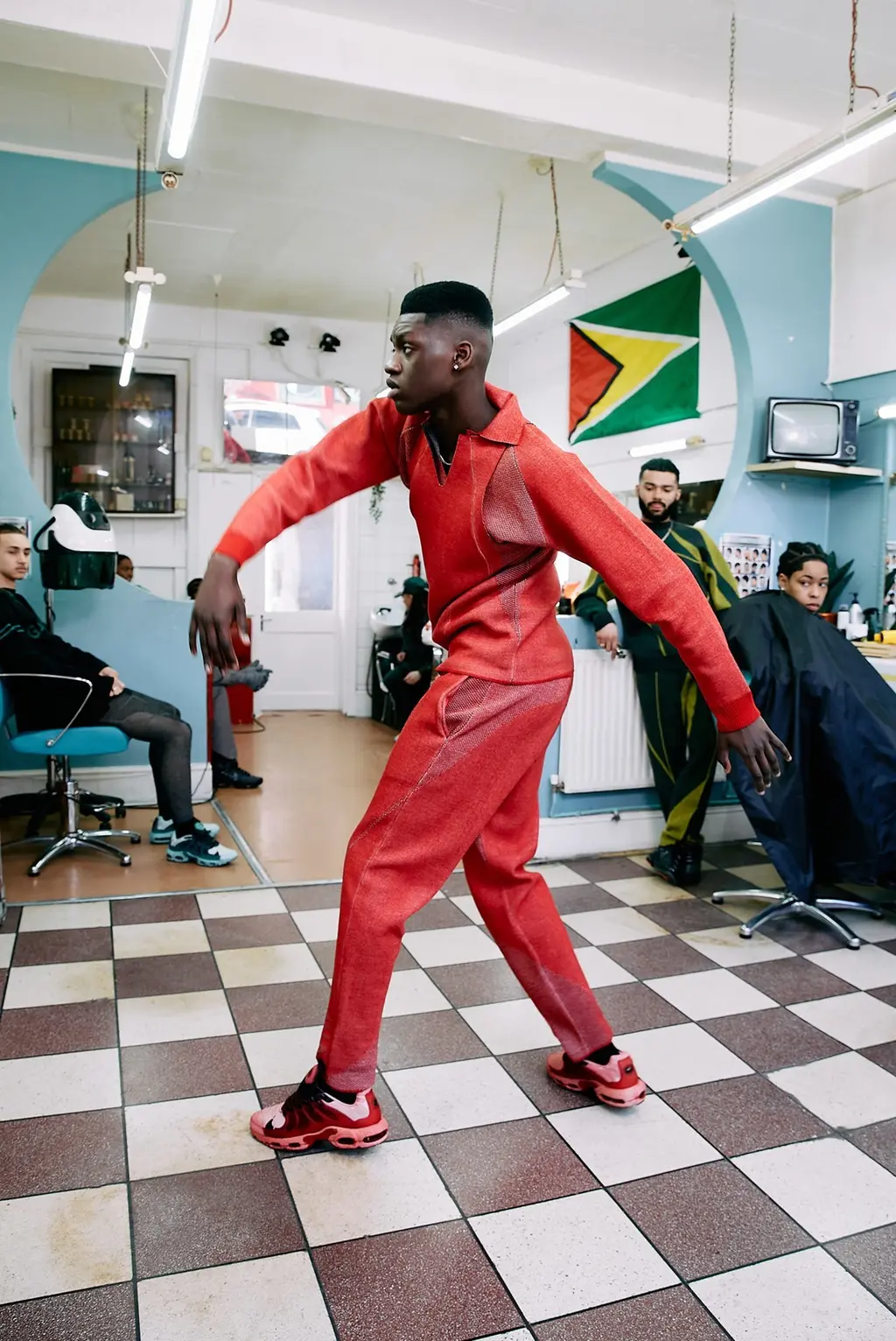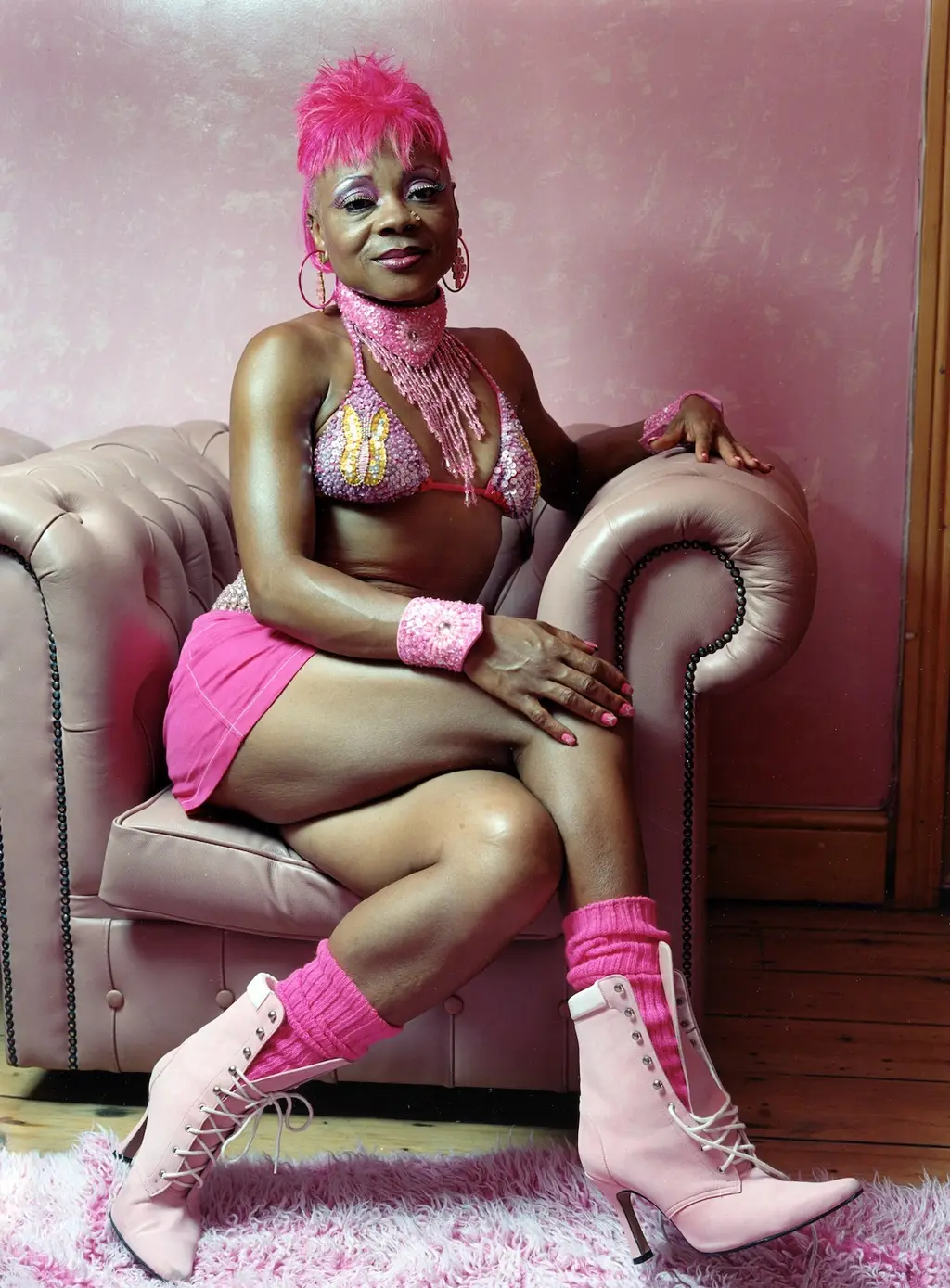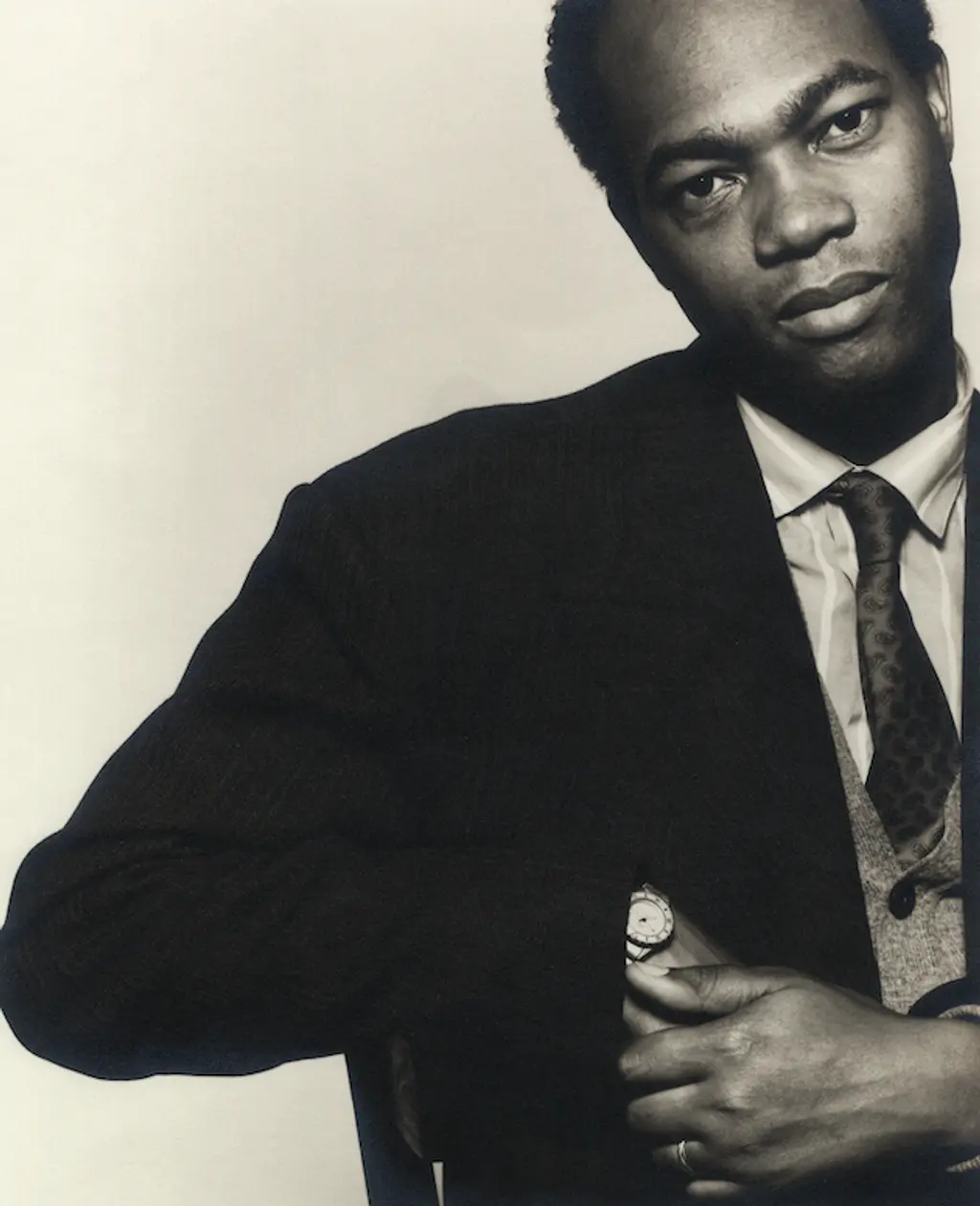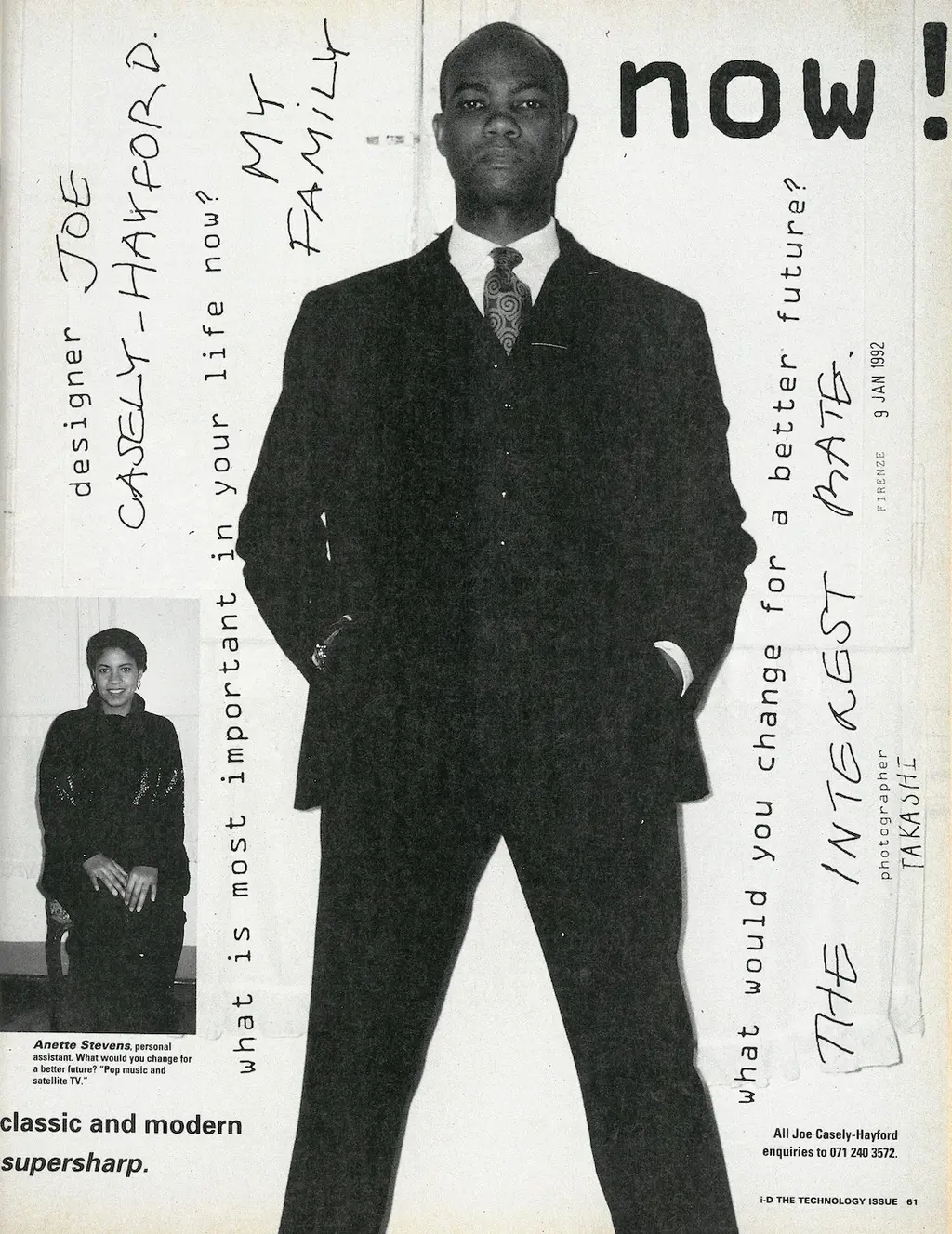The Missing Thread: Black British style in all its glory

Eileen Perrier, Untitled, Afro Hair and Beauty, 1998
Somerset House’s latest exhibition is testament to the influence of Black designers and subcultures, celebrating the style of the community’s trailblazers.
After London Fashion Week closed-up shop earlier this week, and with Black History Month just around the corner, there couldn’t be a better time for a proper celebration of Black British fashion. Opening today, Somerset House’s latest exhibition The Missing Thread: Untold Stories of Black British Fashion is a long-awaited salute to the community’s trailblazers of style.
Look at the catwalks in any given season and you’ll find references to the UK’s legendary Black designers: the iconoclastic casuals of Joe Casely-Hayford, the razor-sharp shoulders of Savile Row’s first Black tailor Ozwald Boateng. Not to mention the countercultural style of young Black Britons in the ’80s and ’90s, informed by sound systems, underground clubs and rebelling against Britain’s complex relationship with its Black and Brown people.
Butonly in recent years has the London Fashion Week schedule featured more than a handful of Black designers in a season. These days, we have the riotous subcultures of Martine Rose, the ultra-modern menswear of Bianca Saunders, Priya Ahluwalia’s Nigerian-Indian influences, Grace Wales Bonner’s study of Black academics, Nicholas Daley’s joyous odes to music, and Saul Nash’s recontextualisation of the tracksuit – an inherently political garment that’s often associated with negative stereotypes perpetuated by the media.
“[My work] is triggered by my own experiences,” says Nash, who presents an original commission in the exhibition. “To some people, because of the connotations they have with the tracksuit and the people that wear it, you can’t really escape it, no matter who you are – even if you are the most “established” individual or a young man in the streets.”

Saul Nash AW23 Ritual BTS Shot by Ollie Trenchard

Normski. She Rockers Shoot with Horse Back Police Intruding, Shepherd’s Bush, 1988
To go with the clothes on display, there’s also a wide range of photography featured. Photographer Normski spent the late-’80s and ’90s capturing rappers, clubbers and well-dressed youth (which often appeared in THE FACE). In The Missing Thread, you’ll find one of his action shots: a white horse-mounted copper bulldozing his way through girl band She Rockers mid photo-op.
“To this day, the most powerful force of implication you can have is a mounted officer,” says Normski. “That is the law in which we are all under, and it’s quite amazing how it has continued to show itself.”
The photo’s inclusion in an exhibition about Black British fashion makes sense. Ideas, concepts and styles from the UK’s African and Caribbean communities have often been attacked then hijacked by white peers who, more often than not, get to lap-up praise for work that steals from the experience of immigrants.
Much of what’s presented in The Missing Thread was made against a backdrop of political turmoil: racism, unemployment, housing crises, homophobia, Tory rule. Sound familiar? But out of it came work that fought against the hardship of everyday life: subversive street style, BPMs that had young people dancing faster and longer, and art that depicted the alienation of being young and Black in a broken Britain.
“The ’80s were a fucked up time. The people that were supposed to be angry were all so fucking oppressed that we started to find shit that made us happy,” Normski continues. “Things like music, subcultures, the hubs of creativity, everyone coming up in different parts of the UK under the reign of the fucking mighty Iron Lady… Everything we did in that time was against the horrible world that we were faced with, coming out of unemployment from the ’70s and all that stuff.”
Artist and photographer Joy Gregory, whose work in the ’90s challenged social norms on race, gender and culture agrees: “I think you have to have something to push against,” she says. “For me, creativity and boredom go hand in hand. I think boredom is really important for you to actually get good ideas. But also, I think terrible times are a great time for radical change that comes from the youth and from the ground-up.”

Jennie Baptiste, Pinky, 2001, Stylist Chinyere Eze, Make-up artist Brenda Cuffy

Joe Casely Hayford, 1987, c Kevin Davies

Joe Casely Hayford, i‑D Magazine, 102 March 1992, The Technology Issue, Photo by Takashi Homma
High-spirited, stylistic works by photographers such as Jennie Baptiste and Eileen Perrier are also on show in the exhibition. Their work turned the stereotypes of Black communities on their head during the ’90s. With full control over their imagery, Baptiste and Fisher presented viewers with an authentic representation of being Black in Britain – a world away from the racially-motivated newspaper headlines.
“I’m always trying to challenge the way that the viewer looks at certain individuals within subcultures and youth culture, how they’re depicted, and how the construction of an image has a lot to do with that in terms of perpetuating stereotypes,” Baptiste says. “So it could be a photograph totally isolated, or it could be a photograph with copy and text to influence the stance of how that image is looked at. These are the kinds of things I use to send a particular type of message out.”
The Missing Thread is part-party, part-urgent political commentary, and part-overdue recognition of the seismic influence the Black community has had on style in the UK. And while the exhibition commemorates the past, it’s also about looking to the future, with Britain’s current taste-makers Bianca Saunders, Nicholas Daley and Saul Nash providing much-needed hope for the future.
“The Windrush generation paved so much for us. I wouldn’t have been able to have done the kind of work I do now, if it wasn’t for them. My uncles, aunties, my mum and dad, they sacrificed a lot,” Perrier says.
“I hope that those coming up now get to live their lives as regular people – not having to justify who they are because of the colour of their skin.”
The Morgan Stanley Exhibition – The Missing Thread: Untold Stories of Black British Fashion is on at Somerset House ’til 7th January 2024






